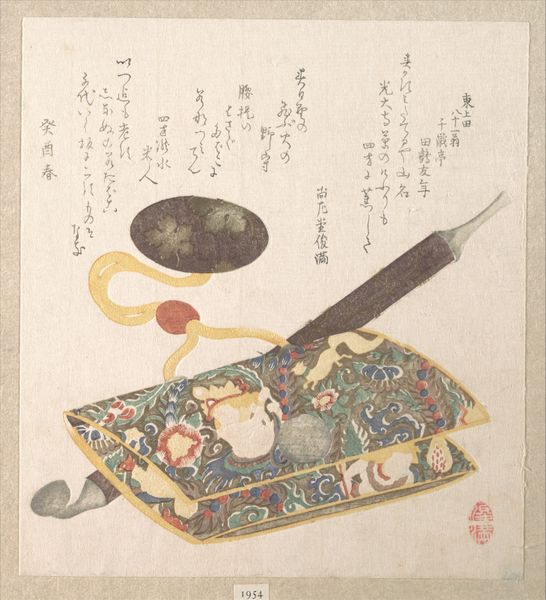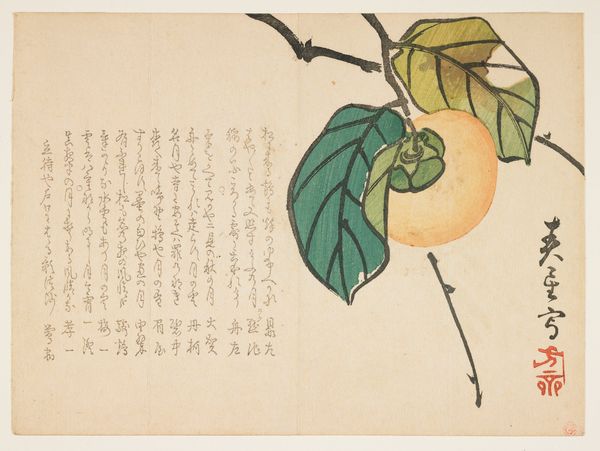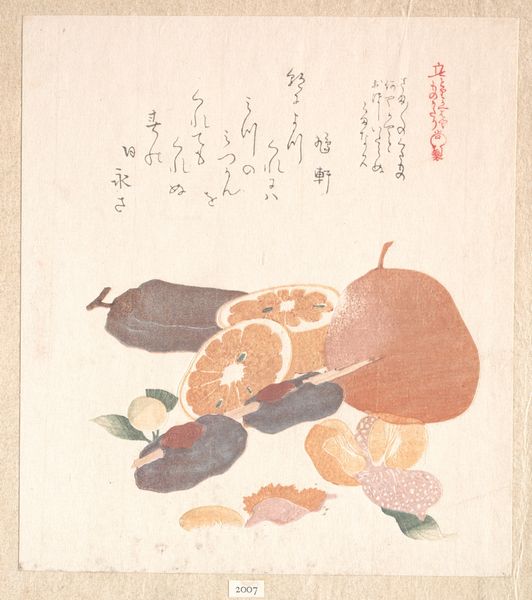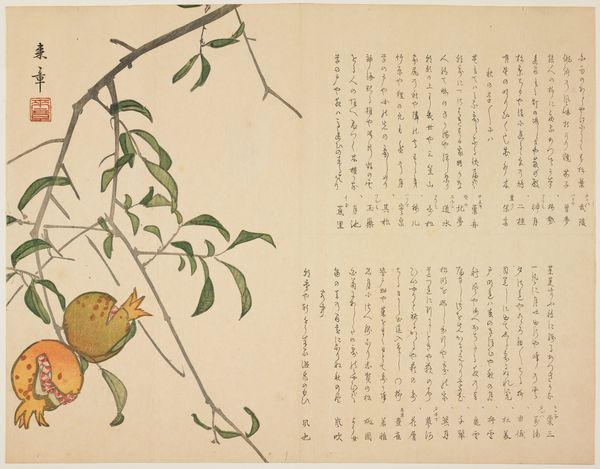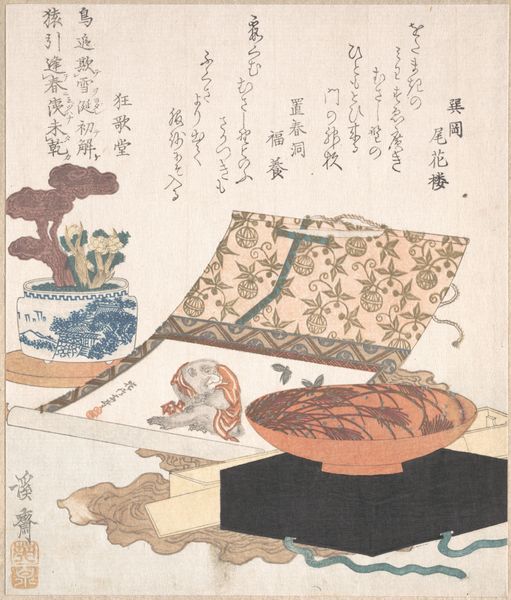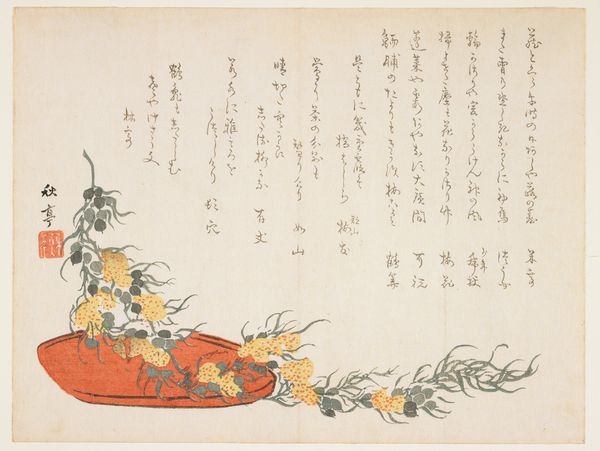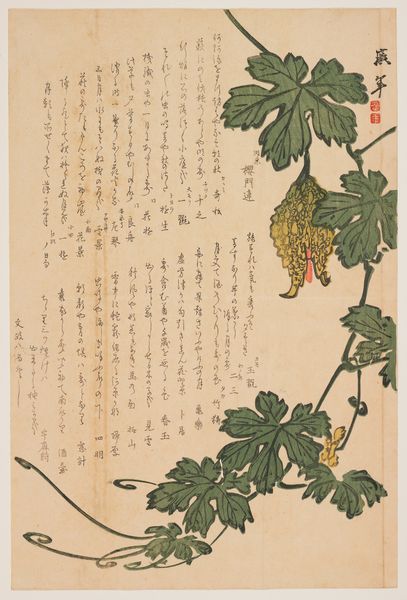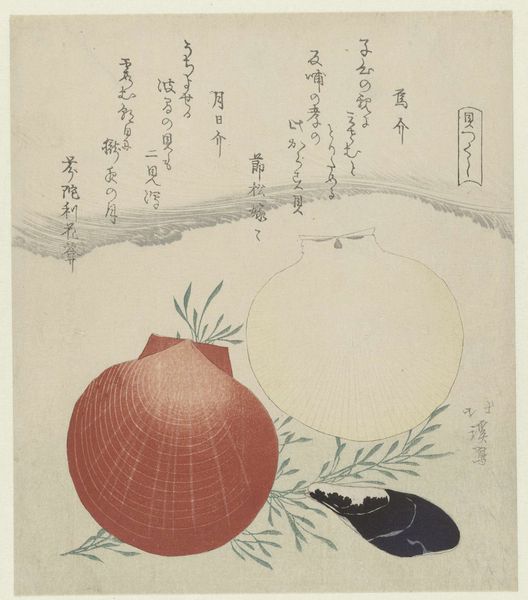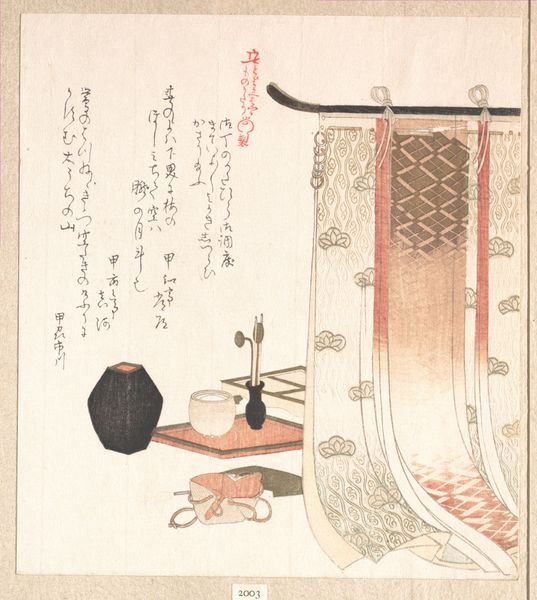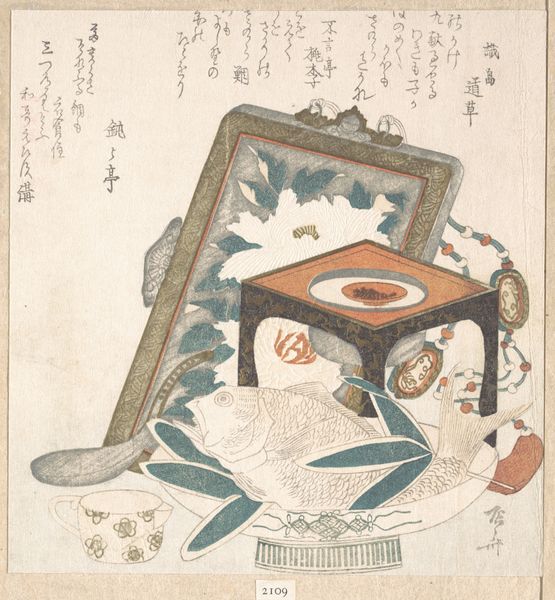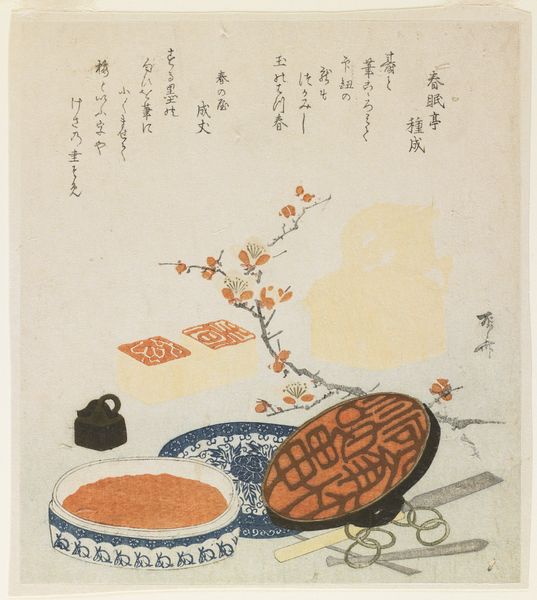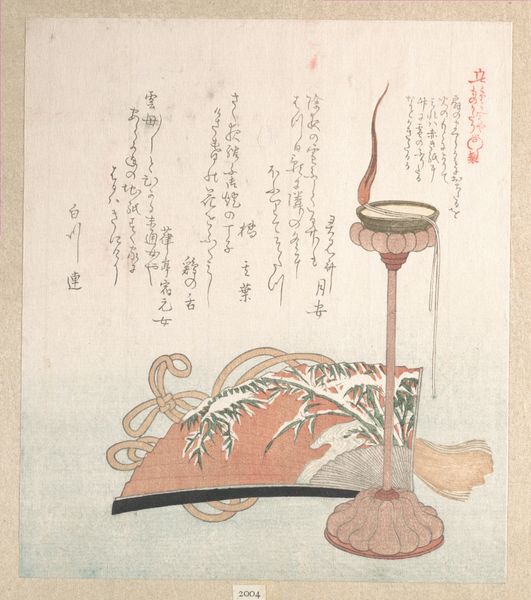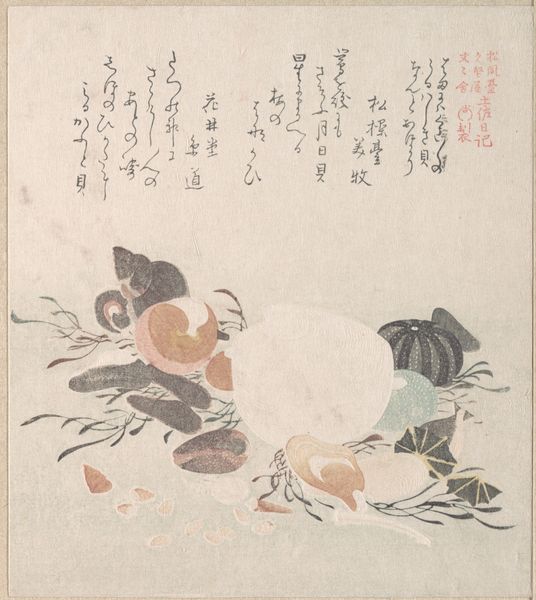
painting, print, watercolor
#
painting
# print
#
asian-art
#
ukiyo-e
#
watercolor
Dimensions: 8 1/8 x 7 1/16 in. (20.6 x 17.9 cm)
Copyright: Public Domain
Editor: Here we have "Persimmons on a Plate," a 19th-century print by Kubo Shunman, rendered in watercolor. I’m struck by its simplicity. The placement of the knife feels a little aggressive. What do you make of it? Curator: Well, I see more than just a still life. The ukiyo-e tradition, in which this print is rooted, was often intertwined with pleasure districts and popular culture. Even seemingly simple domestic scenes can be read as subtle commentaries on social hierarchies. Have you considered how access to imported goods, such as the plate or the fruit itself, would signify status? Editor: That’s interesting, I hadn’t thought about it in terms of class. So the persimmons aren’t just persimmons? Curator: Exactly! Food has historically been a charged subject, signaling who eats what and how. The presence of a knife, which you noted, raises questions: Who is doing the cutting? Who gets to partake? Are we meant to consider the artist's socio-economic standing when viewing the artwork? Also, notice the script. Who was the print designed to reach? How might the context shape our understanding of pleasure and consumption within that society? Editor: I suppose I just saw pretty fruit! I didn't even consider who this image might be *for*. That adds another layer entirely. Curator: Precisely. By exploring those questions, we uncover the deeper social fabric woven into Shunman’s piece. Editor: Thinking about the audience for this, their values and how the print fits within their world view really shifts the image. I definitely see so much more than a plate of fruit now. Curator: It is the role of both art, and the study of art, to bring unseen things into perspective.
Comments
No comments
Be the first to comment and join the conversation on the ultimate creative platform.
